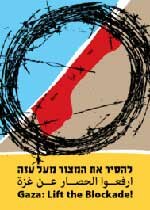By Amira Hass, Haaretz – 2 August 2010
www.haaretz.com/print-edition/features/otherwise-occupied-the-humming-of-the-zanana-1.305409
Palestinians have begun using the slang word ‘zanana’ to refer to Gazans who report to Hamas authorities what people say and do. The same word is used for unmanned aerial vehicle, or drone.
Zanana is the slang word in Arabic for an unmanned aerial vehicle. “There are three types of zanana – the first kind watches us and photographs every movement and every person; the second type shoots missiles at us … ” Thus spoke an official of the Prisoners’ Affairs Ministry in Gaza, formerly a Fatah stronghold. He looked very serious as he sorted through the various types, but when he got to the third type, his eyes twinkled in a way typical of many Gazans: “And the third type, the only purpose of the third type is to annoy us, to give us a headache,” he said, as he skillfully imitated the typical humming of the latest craze (if I am still up to date ) in postmodern warfare.
There is a fourth type that the Gazan official forgot to mention. It is the human type. The sense of humor of Gaza’s residents never ceases to surprise. In the past two years, they have begun using the slang word zanana to also refer to those Gazans who report to the Hamas authorities what people say and do, with whom they meet, who visits them, and whose brother has gone to Ramallah.
The nickname zanana, it seems, has pushed aside the word waziz that used to define those who carried out the same mission of informing to the Palestinian Authority government. The word waziz came from waz which means both to inform and to buzz. The custom and nickname have derived from the Egyptian heritage.
Do they still use “waziz” to define people who send information to the Ramallah government and its security forces (for example, who has begun growing a suspicious beard, or who is receiving a salary from Ramallah but also rents out his land for digging a tunnel, and so forth )? That is a question that I have not been able to clarify, yet. But what is certain is that in the West Bank, they do not use the old expression “waziz” and are certainly not aware of “zanana.”
Of course, the phenomenon exists. In a number of coffee shops and restaurants, for example, there are waiters whose job it is to report what is happening and being said to the authorities, so someone told me. But as far as my research has shown, there is no slang name for the internal informer phenomenon. Amil (agent ) or jasus (spy ) are among the strongest words of contempt in Palestinian Arabic, kept only for people who pass information to the occupiers and work with them.
The peeping zananat that hover over Gaza can sometimes be seen with the naked eye (during Operation Cast Lead someone compared them to flocks of birds flying above, like in the Hitchcock movie, saying with self-conscious exaggeration that “the heavens were black with zananat,” ) but sometimes they are merely sensed through the frequent and annoying disruptions to TV broadcasts, especially at the most interesting and suspenseful parts of a film.
An old friend, Iyad, cannot tolerate Hamas but he agrees that sometimes it seems as if the zananat have been sent simply to annoy people. He recalls that during the period of the direct occupation, when the army and all its branches sat inside Gaza, one of the Border Policemen had the job of interrupting films on television by shouting loudly and protractedly, especially in the most interesting parts and during the nighttime curfew when there was nothing else to do but to escape to the world that the films offered.
It is sometimes difficult to know with Iyad when he is joking and when he is reporting. He has the ability to show the reality through its trivial, even ridiculous sides. The jump he made to the methods of irritation from 20 years back or more immediately sketched the tremendous technological leap that Israel has made on its way to turning Gaza into a detention camp under constant supervision and control that is less and less visible yet more and more invasive. Every movement of every one of its detainees is photographed, documented and transferred to computer screens in control rooms populated by young and talented Israeli men and women who love life.
Sometimes Palestinians have insisted that what killed their neighbor’s children, for example, who were on the roof of their house, or the missile that landed right next to them when they were in the garden and injured them, was from a UAV. They know this because of the humming and the size of the missile, the small metal blocks that stuck in the walls, the crater that was formed in the ground or floor, that was much smaller than that made by a missile fired from a helicopter. The Gazans, after all, are experienced in every, or almost every, kind of Israeli weapon.
But no one could say what killed 21 members of the Samouni family in a few minutes on January 5, 2009, in their neighborhood of Zeitoun. Some said it was shells fired by tanks in the main street. Some said it was something from the air, certainly not a plane that they would have heard. An Israel Defense Forces bulldozer destroyed the entire building later, with all its bodies, and it was difficult to identify the projectile. But what difference does that make? It was the Israeli soldiers who told them to gather in one house – women, children, elderly and middle aged people – and it was the soldiers who fired what they fired at them.
Yedioth Ahronoth reported two weeks ago that the Military Police are conducting an investigation against the commander of the Givati Brigade, Colonel Ilan Malka, “on suspicion that he authorized the firing from the air” on the Samounis. We have not solved the riddle. We don’t know what kind of firing from the air. But the reporter Yossi Yehoshua also wrote that Malka said during debriefing that “he was convinced a group of terrorists were hiding in the building that had shot at our troops, and he did not know there were civilians in the building.”
And at the receiving end, Salah Samouni, one of the survivors of the attack, told me: “We sit at home and look at the pictures of those killed, and we envy them.”








































